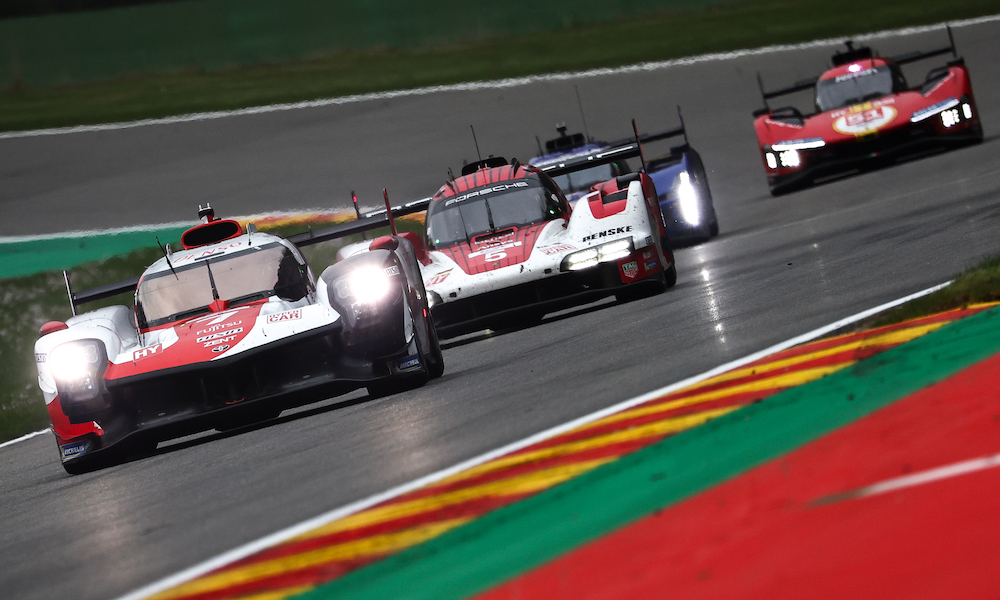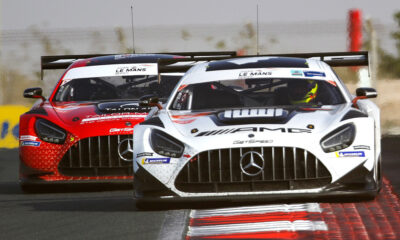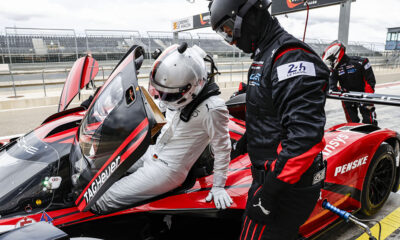Four Hypercar manufacturers including FIA World Endurance Championship leader Toyota have received weight increases in a Balance of Performance adjustment ahead of this weekend’s 24 Hours of Le Mans test day.
The Toyota GR010 Hybrid will run 37 kg heavier than it did during its victories in the second and third rounds of the WEC season at Portimao and Spa-Francorchamps, and 18 kg heavier than it did at the Sebring curtain-raiser which had its own set of BoP values.
The change gives Toyota’s hybrid LMH car a new minimum weight of at 1080 kg, putting it 50 kg heavier than the lightest of the LMHs from Glickenhaus and ByKolles.
Ferrari, Porsche and Cadillac have also been affected by the first Balance of Performance change of the year, which was confirmed in an official bulletin on Wednesday.
The Ferrari 499P has been given a 24 kg weight increase since Spa, while the LMDh-spec Cadillac V-Series.R and Porsche 963 have been tweaked by 11 kg and 3 kg respectively.
Those changes have been partially countered by increases in the amount of energy that can be used over the course of a stint, which is measured in megajoules and monitored by real-time torque sensors affixed to each car.
The Toyota has an additional 4 MJ to use, while the Ferrari and Cadillac have an extra 2 MJ and 1 MJ respectively. There has been no energy per stint adjustment on the Porsche.
Wednesday’s BoP update ahead of the test day is not considered to be a so-called ‘platform’ BoP change because cars built to the same platform, such as the LMH-spec Toyota and Ferrari, have been adjusted by different amounts.
Porsche called for a platform-based review after the 6 Hours of Spa-Francorchamps where defending Le Mans winner Toyota Gazoo Racing took its third win of the season.
The Peugeot 9X8, Glickenhaus 007 Pipo and ByKolles-built Vanwall Vandervell 680 Gibson remain unchanged from the initial BoP table that was published in March.
At that time, WEC organizers the FIA and ACO stated that the intention was not to change the per-car BoP until after Le Mans, although it is understood that a platform change could have occurred beforehand.
The BoP is designed to balance cars built to the different LMH and LMDh regulations and relies heavily on simulated data to determine each vehicle’s potential performance level.
BoP Table Also Published for GTE-Am
The initial Le Mans BoP for the GTE-Am class has also been confirmed ahead of Sunday’s test at the Circuit de la Sarthe.
Success ballast from the WEC is not applied for the longest race of the season, meaning that cars have equal weight to their peers from the same manufacturer.
The Porsche 911 RSR-19 is the heaviest car at 1300 kg, followed by the Chevrolet Corvette C8.R at 1289 kg, the Ferrari 488 GTE Evo at 1264 kg and the Aston Martin Vantage GTE at 1262 kg.
Compared to last year’s final Le Mans BoP, the Ferrari is 15 kg lighter and the Porsche is 5 kg heavier, while there has been no weight change for the Aston Martin.
The Corvette is set for its first Le Mans outing in GTE-Am after previously running in Pro.
Elsewhere in the table, maximum fuel volumes have been set at 102 liters for the Porsche, 97 liters for the Aston, 96 liters for the Corvette and 88 liters for the Ferrari.
The naturally aspirated Corvette and Porsche will have maximum air restrictor diameters of 41.3 mm and 30.7 mm respectively, while turbo boost ratios have been set for the Aston Martin and Ferrari.


























